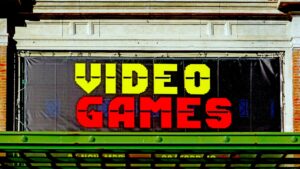GameStop Short Squeeze Demystified: A Data-Driven Truth Beyond the Media Narrative

Explore a comprehensive data analysis of the GameStop short squeeze, uncovering the real reasons behind the event and its lasting impact on the stock market.
Introduction
The GameStop short squeeze of early 2021 captivated the financial world, sparking debates and widespread media coverage. While the mainstream narrative painted it as a heroic battle between retail investors and Wall Street giants, a deeper data-driven analysis reveals a more complex and institutional-driven event.
Understanding the Short Squeeze Phenomenon
A short squeeze occurs when a heavily shorted stock’s price begins to rise, compelling short sellers to buy back shares to cover their positions, thereby driving the price even higher. In the case of GameStop (GME), several hedge funds aggressively shorted the stock, predicting its decline. However, a surge in buying activity disrupted these expectations, leading to significant losses for short sellers.
Media vs. Data: The Divergent Narratives
The Populist Revolt Myth
Mainstream media outlets often portrayed the GameStop saga as a grassroots uprising led by an online community of retail investors from forums like Reddit’s WallStreetBets. This narrative suggested a David vs. Goliath scenario where small investors collectively outmaneuvered powerful hedge funds.
The Institutional Reality
Contrary to this portrayal, data analysis indicates that institutional players played a pivotal role in the short squeeze. A substantial portion of the trading volume during the squeeze was facilitated by market-makers like Citadel Securities. With Citadel handling a significant percentage of GameStop trades, the impact of institutional trades overshadowed the contributions of retail investors.
Key Data Insights
Trading Volume and Order Execution
-
Citadel’s Dominance: Citadel Securities processed approximately 39% of all U.S.-listed retail volume for GameStop during the short squeeze period. This substantial share highlights the influence of institutional trading activity.
-
Order Flow Dynamics: Over 50% of Robinhood’s orders were routed through Citadel, further emphasizing the intertwined relationship between retail platforms and institutional market-makers.
Share Price Movements
The volatility in GameStop’s stock price was not solely driven by retail investor enthusiasm. Large block trades, often ranging from thousands to millions of dollars, contributed significantly to the price fluctuations, indicating institutional manipulation rather than organic retail-driven growth.
Long-Term Impact on the Market
While the immediate effects of the short squeeze saw an astronomical rise in GameStop’s stock price, the long-term sustainability remains questionable. Data shows that after the peak, GameStop’s price experienced an approximate 80% decline, underscoring the speculative nature of the surge.
The Role of Robinhood and Market Transparency
Robinhood’s temporary restrictions on buying GameStop shares during the squeeze fueled conspiracy theories about collusion between brokerage platforms and hedge funds. However, regulatory frameworks and clearing deposit requirements necessitated these restrictions to manage credit risks during unprecedented trading volumes.
Order Flow and Revenue Models
Robinhood’s revenue largely stems from selling order flow to market-makers like Citadel. This business model places retail investors at a disadvantage, as it prioritizes institutional profits over optimal trade executions for individual traders.
Implications for the Future
Regulatory Considerations
The GameStop episode highlights the need for greater transparency in market operations, particularly concerning the relationships between retail platforms and institutional players. Potential regulatory measures could include:
-
Separation of Market-Making and Hedge Fund Activities: Preventing firms like Citadel from simultaneously acting as market-makers and hedge funds to eliminate conflicts of interest.
-
Enhanced Reporting Standards: Mandating more detailed disclosures of short positions and trading volumes to provide a clearer market picture.
Market Dynamics Evolution
The short squeeze has altered how retail investors perceive and engage with the stock market. However, without substantial changes in market structure and regulation, similar events are likely to be driven by institutional strategies rather than genuine grassroots movements.
Conclusion
The GameStop short squeeze serves as a critical case study in understanding market dynamics and the interplay between retail investors and institutional forces. While the media narrative celebrated a populist victory, data analysis reveals that the event was predominantly influenced by institutional trading activities. Moving forward, enhancing market transparency and regulatory oversight will be essential in ensuring a fair and equitable trading environment for all participants.
Stay informed and dive deeper into the world of finance and stock market dynamics. Join the community today!




